Ponds, puddles, small lakes, small water courses and other smaller wetlands, often appear as a habitat of low importance, when in practice they are rich in biodiversity.
There are many insects that live in the still or flowing waters, and that can spend inside them all the vital cycle or only the larval phase. Think that the presence of some of them in these environments, is so important that it is used to evaluate the health of the body of water where they are located.
How they breathe in water
Some have evolved to be able to absorb the oxygen available in the water, others continue to need the oxygen existing in the air, thus emerging from the water to breathe. Among the latter are the nepidae, also known as water scorpions. It’s a hemipteran with a particular structure called siphon, which allows it to take the necessary oxygen, rising to the surface. In other species, the air is trapped to form an air bubble under the sclerified and hardened wings (called elytra) as in the great diving beetle, or under the abdomen as in the backswimmers; in this way, the oxygen passes from water to the air bubble, and is then absorbed by the organism. The larvae of the dragonflies and some mayflies, have instead adapted to absorb the loosed oxygen in the water, developing special organs, the spiracles.
As mentioned above, some aquatic insects are linked to water for the entire vital cycle, from the egg to the adult stage, whilst in others only the larval one. Let’s see some examples:
Water scorpion
It’s so called for its resemblance to scorpion, especially for the developed forelegs (used to grab the prey) and for the siphon, used to breathe the air. The female lays the eggs in spring, on the aquatic vegetation. The larvae that are born, live in the water and perform 5 moults before becoming adult. The young look like miniature adults.
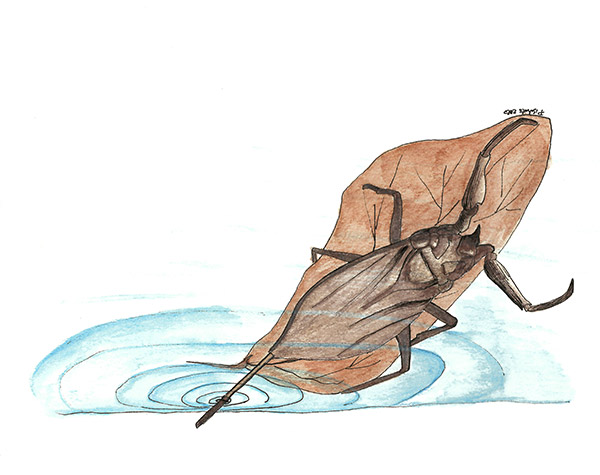
Great diving beetle
The eggs are laid on aquatic plant leaves, and being an operation that requires time and accuracy, it can go on even for ten weeks. The developing larva looks completely different from the adult: it has a narrow and slender body, rather than oval and flattened. At the time of the final metamorphosis to become adult, the larvae stay hidden in the mud of the pond. All stages of development are aquatic.
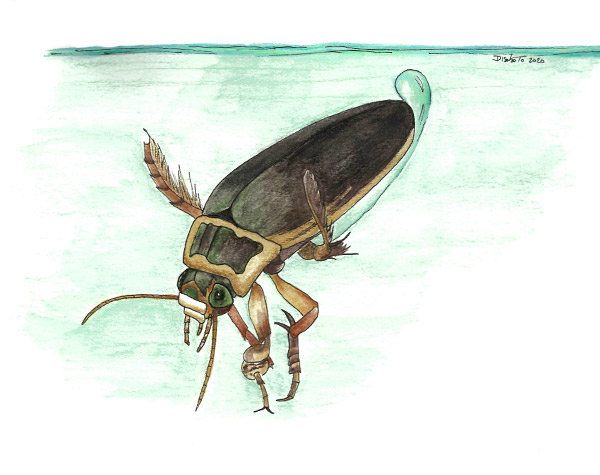
Common backswimmer
It swims upside down, “rowing” with the hind legs. In the adult stage, it can fly to move from one water basin to another. In spring, the female lays the eggs in the stems of aquatic plants. The young stages are aquatic and similar to the adult one, but without wings.
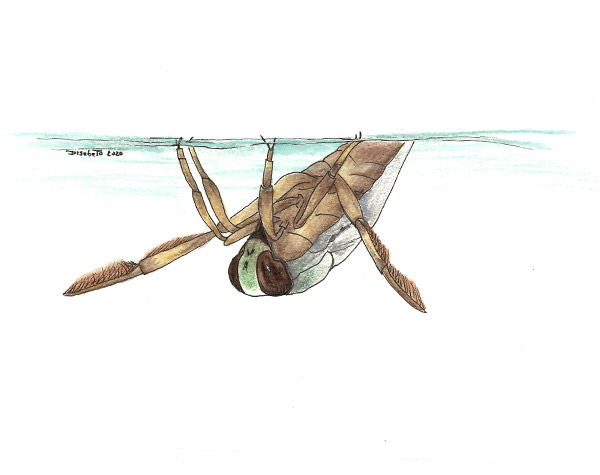
Mayfly
The larva is aquatic, the adult is terrestrial. Its name is due to the particularly short adult life, 1-2 days. The larvae breathe through the spiracles, feed and grow by systematically changing the exoskeleton, making the moults. They live in the mud or stuck to the rocks on the seabed. They have “wing bags” containing those that will become wings in the short adult phase.
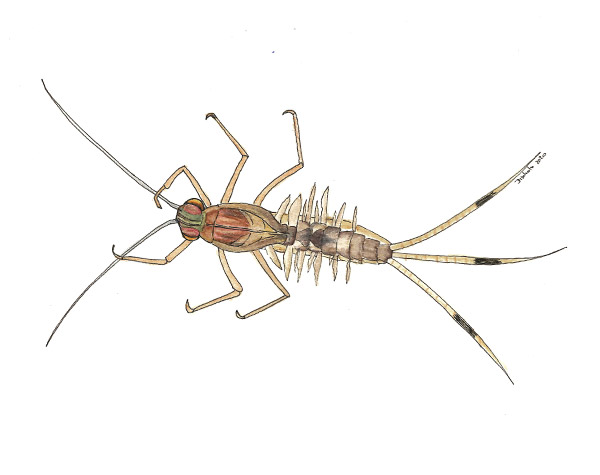
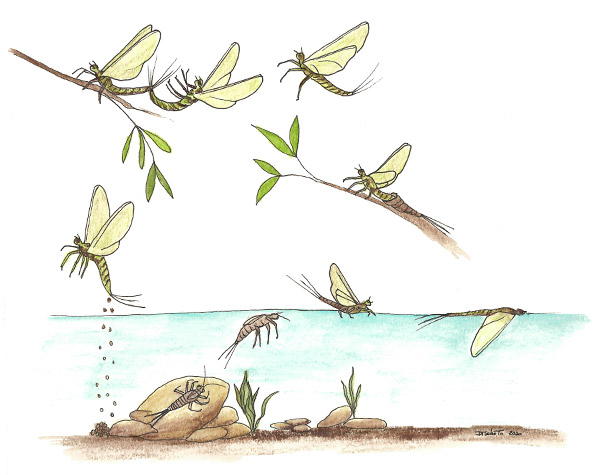
Caddisfly
It’s so called because the wings of the adults are covered by short hairs. The larvae use debris, sticks, pebbles and pieces of algae of the aquatic environments where they live, to build a protective case, a sort of "mobile home". Just before the larva turns into pupa, seal the front and back openings, leaving only a small hole for the water to flow through, with the oxygen necessary to breathe. Inside the case, the transformation into adult takes place. Once completed, it will swim towards the surface to get out and fly.
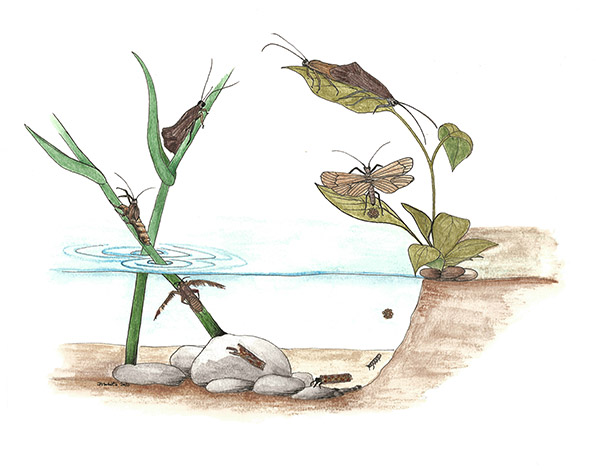
Looking for the aquatic insects
The underwater world is one of the most fascinating shows of nature. If you start to look at it, your doors will open to an attractive microcosm.
Just follow these simple tips:
- Always carefully explore any “collection” of water: streams, ponds, pools; even a tiny puddle can host interesting life forms
- Always bring with you a net and some containers: tubs, jars, pots, etc. Small wildlife boxes are good
- Dip the net and pass it very softly on the seabed, between the mud and vegetation
- Pull up the net and put everything into the different containers
- Now you just have to start the watching!